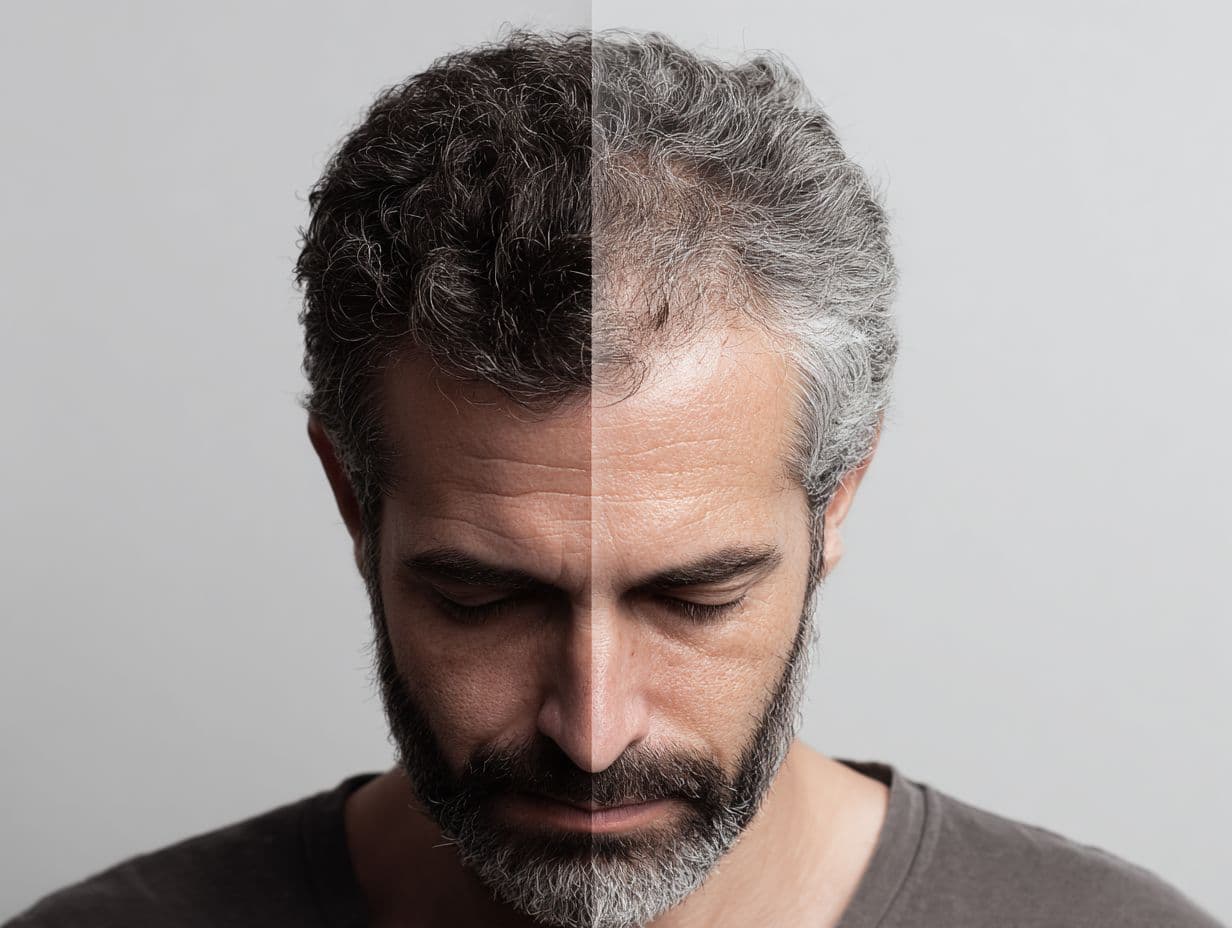
- Publication
- Agacell
- Dermatology
- Alopecia
Ageing and Androgenetic Alopecia (AGA)
Ageing and Androgenetic Alopecia (AGA)
Ageing is a natural human process with visible and invisible signs mainly caused by oxidant agents accumulation. Hair follicle cycle can also be negatively affected leading to a diminished hair growth over time.
AGA and ageing: common features and implications
Cellular senescence is a state in which cells permanently stop dividing while remaining metabolically active and not dying in the short term. This state gives rise to so-called 'zombie cells' and occurs as part of the natural aging process, as well as in cases of androgenetic alopecia (AGA), where dihydrotestosterone binds to androgen receptors on cells that play a key role in initiating the hair cycle — the dermal papilla cells (DPCs).
Although aging and AGA are both independent processes most of the elderly alopecia cases are dihydrotestosterone-driven, creating ambiguity to determine if AGA, ageing or both are responsible for hair loss. In fact, ageing is considered a risk factor for developing AGA.
Key cellular players in the hair cycle: DPCs and HFSCs
Dermal papilla cells are essential for the proper initiation of the hair cycle. When senescence occurs, these cells remain in a resting phase and consequently do not contribute to hair production. Moreover, senescent dermal papilla cells secrete proinflammatory molecules and generate reactive oxygen species, both of which damage the microenvironment necessary for hair follicle growth. This disruption can also negatively impact other crucial cells to the hair cycle, such as hair follicle stem cells (HFSCs). As ageing occurs, HFSCs are periodically eliminated from the skin through terminal epidermal differentiation—contributing to hair greying, thinning, and loss. Although not yet fully elucidated, evidence suggests that AGA condition may not involve a reduction in HFSC numbers, but rather an impaired activation and transition of these cells into a proliferative state. This dysfunction is largely attributed to a disrupted microenvironment, ultimately leading to the arrest of a new hair cycle.
Potential therapeutic strategies for senescence observed in alopecia
Understanding the mechanisms of senescence in DPCs and dysfunction in HFSCs can provide insights into potential therapeutic strategies for alopecia. These strategies may involve the use of senolytic agents designed to selectively target and eliminate senescent cells, thereby mitigating their detrimental effects on surrounding healthy tissues, antioxidants to reduce oxidative stress, and stem cell-based therapies aiming to restore a healthy microenvironment and promote hair follicle regeneration.